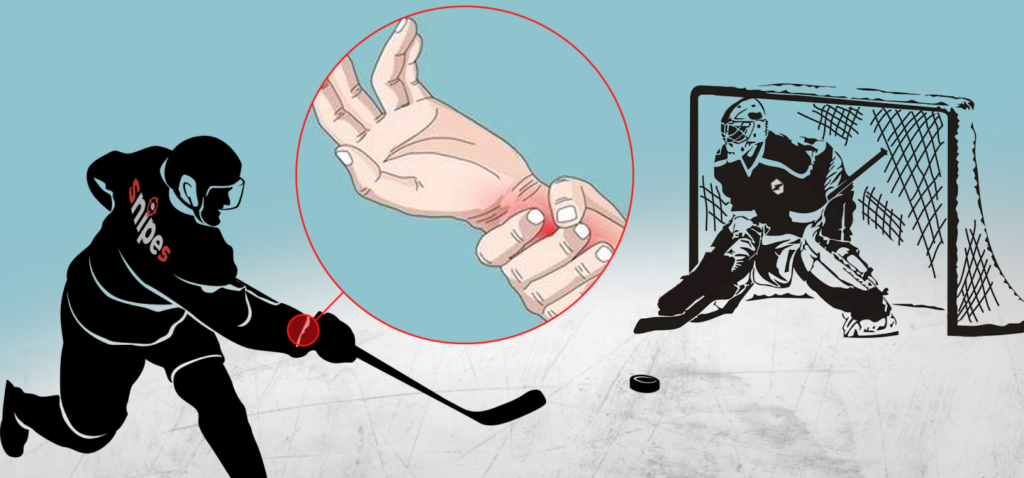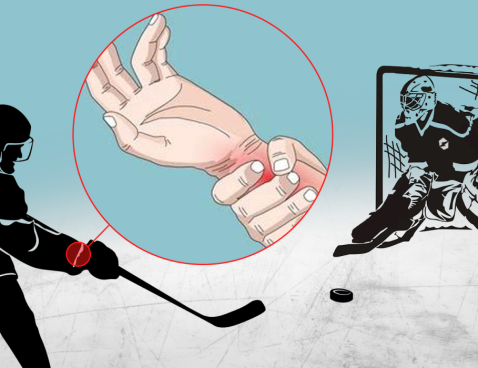Written by
Bill Murray
Bill Murray is a world-renowned athletic trainer who won the Stanley Cup twice with the New Jersey Devils. He is a Bolt Sports Co advisor and among other things will be telling you to prevent & cure injury.
- May 17, 2022
- Product Insight
Hello Snipes Community, I’m proud to be associated with this group of hockey enthusiasts who are dedicated to improving their skills.
I’m equally excited to share some of the knowledge and experience I’ve picked up, in my over three decades in this game, with you. I hope you will benefit from our discussions and dialogue and I encourage you to comment and even submit your own questions and ideas.
In this article we will talk about the difference between nagging wrist discomfort, why it occurs, and the type of chronic, persistent pain that requires professional medical attention.
We remind athletes, especially at the professional and elite levels, that there is a difference between being hurt and being injured; they are not the same. We usually expect a player who is hurt to “battle through” while we never encourage an injured player to participate at all.
So how can we tell when to battle through and when we must stop before we cause something that’s relatively minor, specifically in the wrist, into something more serious?
We see a variety of wrist injuries in hockey and apart from the obvious sudden sprains and occasional fractures how do we know what’s serious and what can simply be treated with rest and common sense?
Between the 1980’s and through the 1990’s there was a shift from from laminated wood sticks to aluminum-wood composites to the full composite sticks we see today.


While these composite sticks have resulted in a faster pace of play they have also had an unintended consequence of contributing to some added risk of developing more chronic wrist injuries.
There’s no doubt that the composite stick has changed our game with less weight, more whip, and increased bounce off the blade. The combination of stiffness and lightness of the composite stick has led to wrist shots, snapshots, and slapshots that can be placed in any corner of the net, including your Snipes, at very high velocities.
In order to achieve these amazing feats the shaft of the composite stick will bend like a spring for added force and the reaction of that energy will come back to the player as another force. This transfer of energy will find the weakest link along the chain and this is in the wrist.
The tendons of the wrist are the most vulnerable area in this chain.
A tendon is the connective tissue that attaches muscle to bone and there are five tendons that control the wrist.
In some players the tendon can become inflamed causing soreness, swelling, and sometimes some clicking; you will notice an increase in pain with stick handling and shooting. This can usually be treated by cutting back on your activity with rest in addition to ice, some over the counter anti-inflammatory medication, and taping for support.


When these things do not show a marked improvement after 48 hours medical attention is required but don’t panic. The next step could be a corticosteroid injection which will usually solve your problem.
At the beginning of this story we talked about the difference between being hurt and being injured. There is a difference between the kind of soreness that sometimes occurs after an intense practice or game and injury pain that has occurred suddenly or gradually developed.
Injury pain can last for an extended period of time and may include swelling; it is slow to respond to treatments and rest. If you have wrist pain that does not go away or significantly improved within 48 hours you must consult with a professional healthcare provider.
Use pain as a gauge: if it hurts, stop; it’s really very simple. I remind players constantly to “ listen to your body”.
If that wrist discomfort you have has turned into wrist pain that is chronic and if you have noticed a decrease in your strength and abilities then it’s time to seek a consultation with your health care provider because you are not just hurt, you are injured, and you will never successfully “battle through”.




